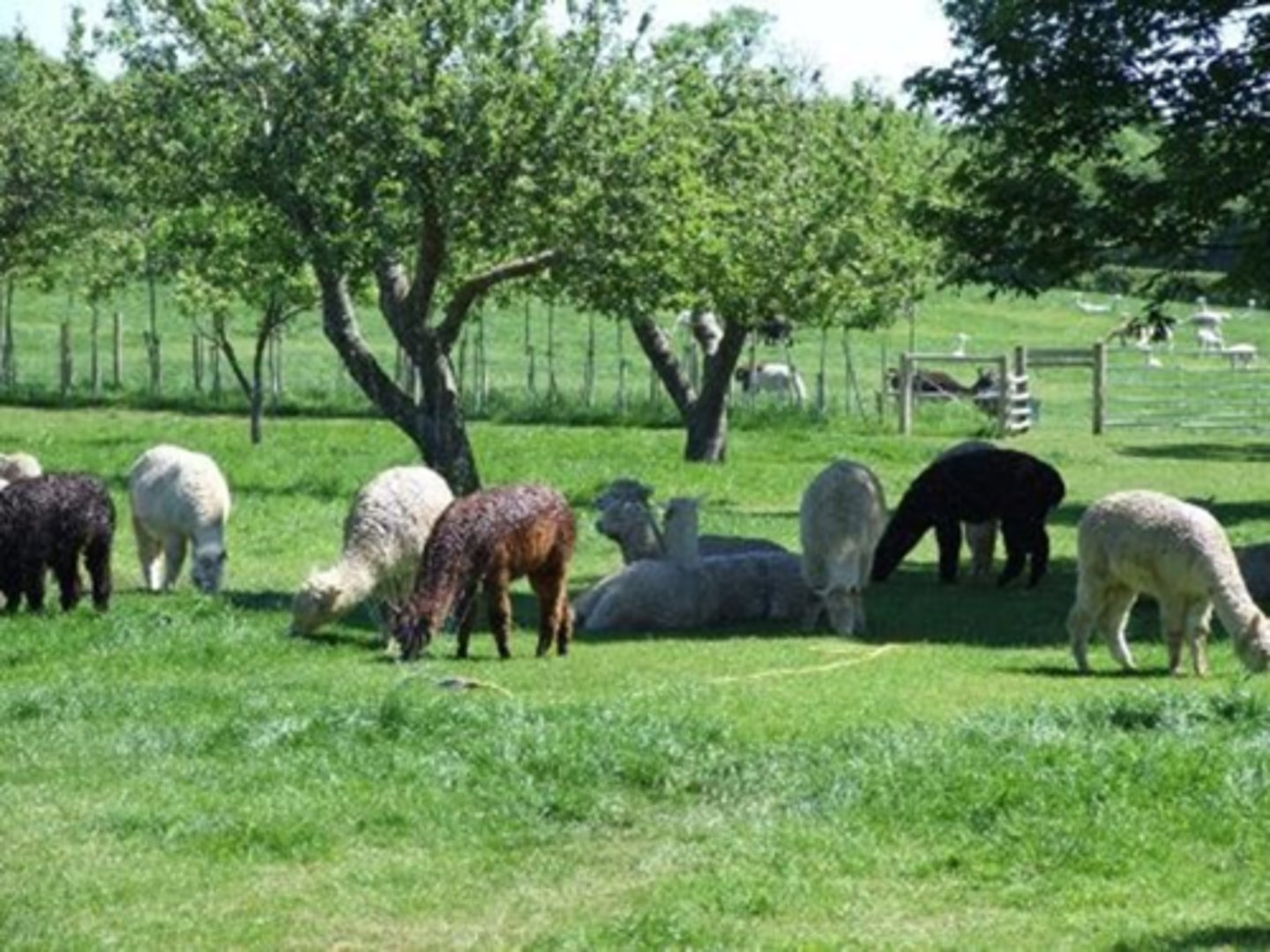Camelids
1/26
There's no tags or description
Looks like no tags are added yet.
Name | Mastery | Learn | Test | Matching | Spaced |
|---|
No study sessions yet.
27 Terms
Outline the numbers of alpacas and llamas in the UK
-40,000 Alpacas
-7,000 Llamas
What are the core camelid speices?
-Alpacas
-Llamas
-Vicuna
-Guanaco
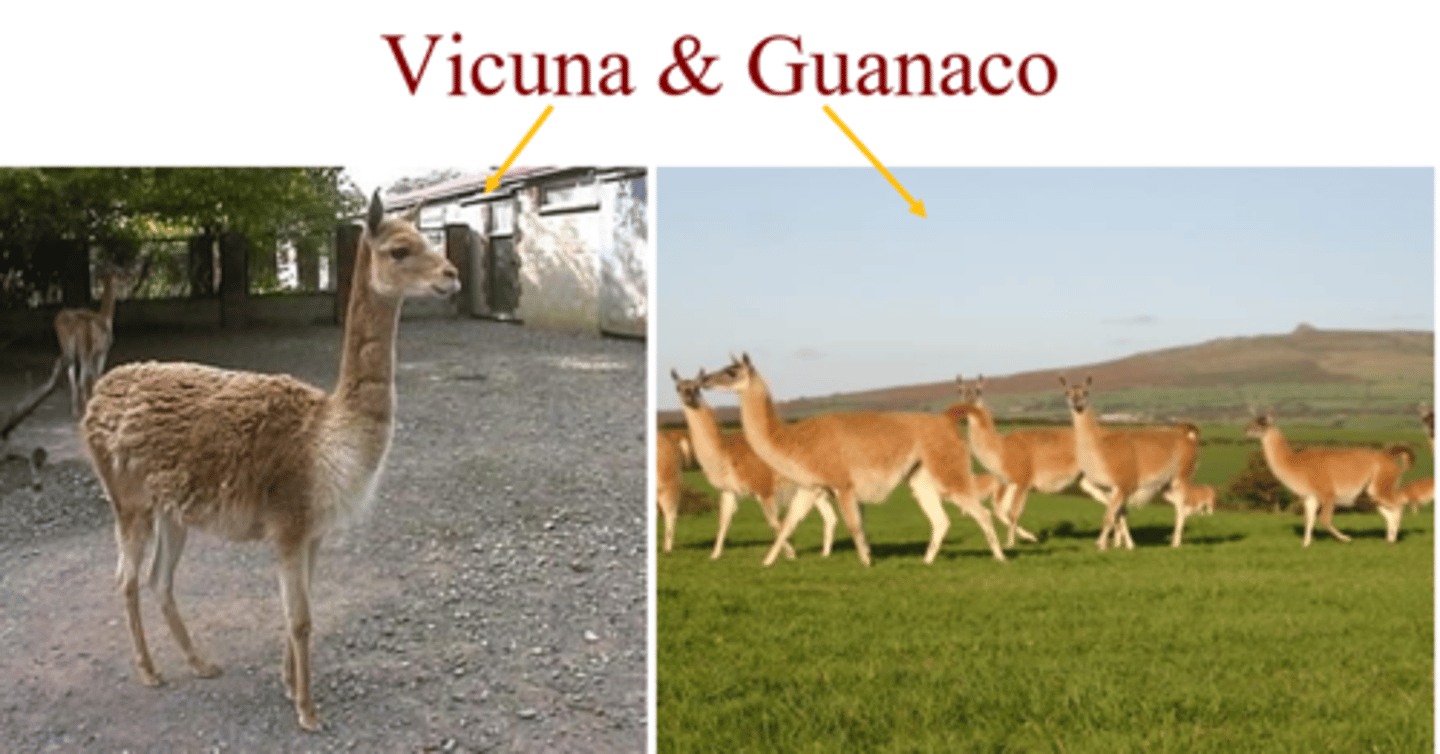
How can you tell llamas from alpacas?
-Llamas have banana-shaped ears
-Llamas usually weigh more
-Alpacas have a shorter snout
What are the main purposes of alpacas in industry in the UK?
Fleece:
-Ultrafine
-No laminin (so helps with allergy)
-Have very shallow scales meaning they dont "scratch" as much
-Used for clothing
Breeding:
-Some males can be up to £150,000
Guard animals:
-Some can be used to protect sheep flock
Leisure/hobby:
-Some people keep them just to have them as "pets"
-They can even be used in competitions
What are the common breeds of alpacas? What are their fleece conditions?
-Suri (better quality, harder to process, coarser)
-Huacaya (easier to process but not as high quality, softer)
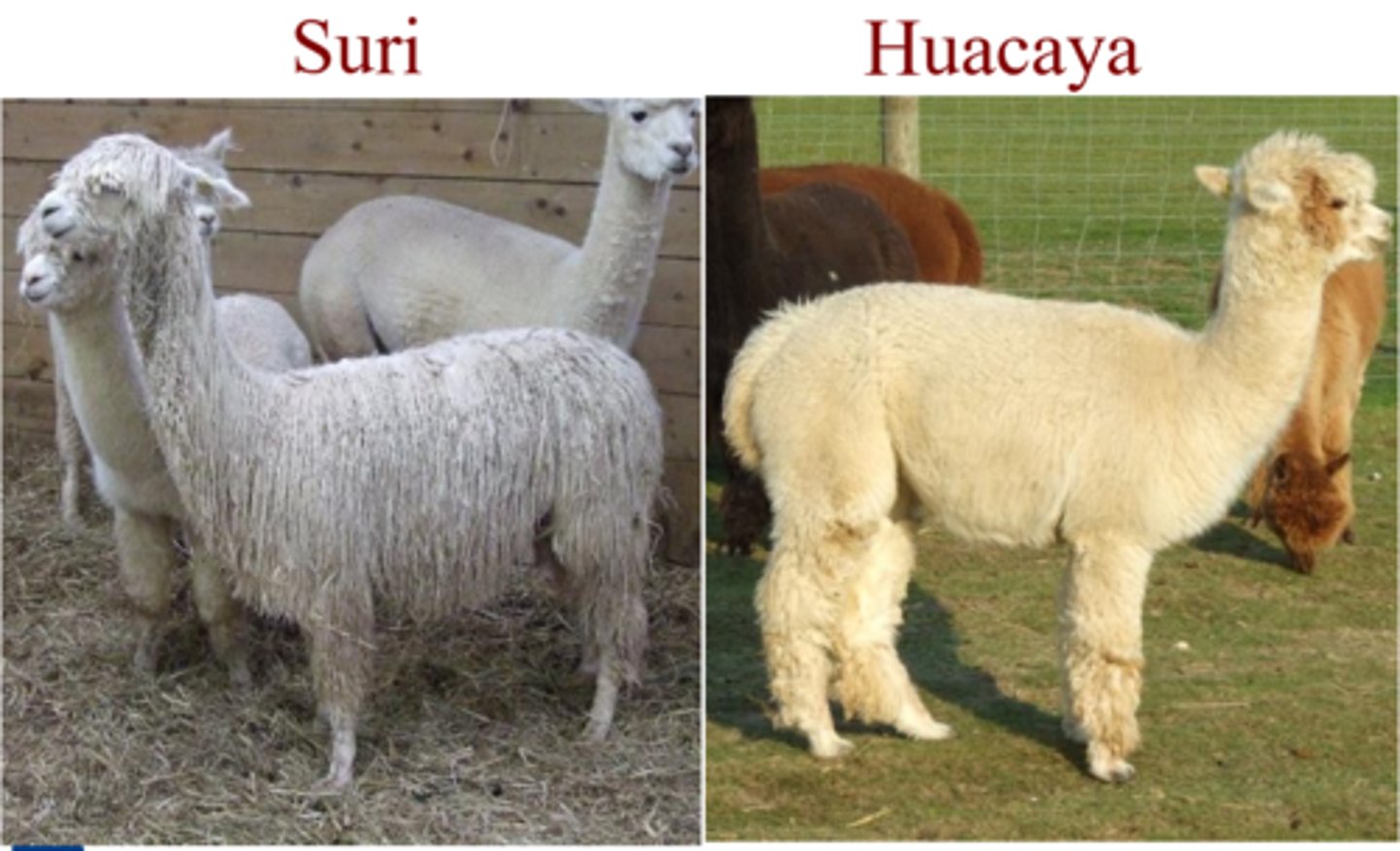
How would you properly restrain a camelid for shearing?
-Tie front and back legs whilst lying on the floor
-Then shear
What are the main purposes of llamas in industry in the UK?
Social:
-Used a lot for walking
-E.g. leisure walking with a llama
What are the main noises that llamas make?
-Humming (social)
-Snort (mild aggression)
-Clicking (calling to young)
-Alarm (social + warning)
-Orgling (during mating; can induce ovulation)
Why do llamas spit?
-As a method of defence
-First it is saliva, then it is stomach contents
How can you generally tell a camelids temperament
-Ear position
-Lip curling
What are the main methods of restraint for camelids? What are the main considerations when handling them?
-Bracelet grip
-Neck grip
-Don't try and bring them towards your body, move to them
-Don't pull them off balance
-Try to audibly breath as it comforts them
-Don't surpass the stress threshold (key sign of this is mouth-breathing)
Describe the halter fit on a alpaca
-Need very high fit as they have a short nasal bone
-They are obligate nose-breathers so it must be on the bony bridge
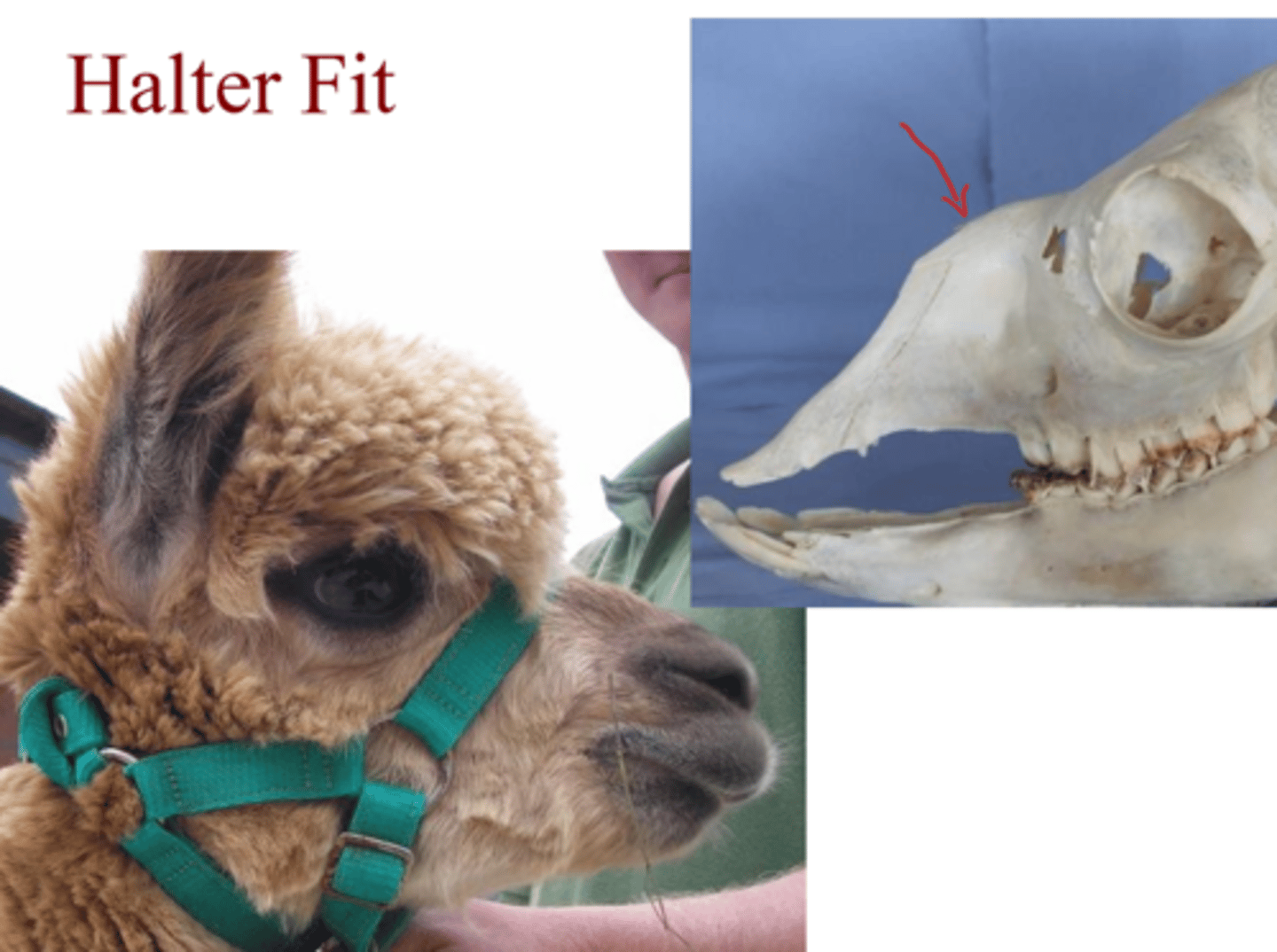
What is pouting in alpacas?
-Aggression sign
-Curling of the lower lip

What are young camelids called?
Cria.
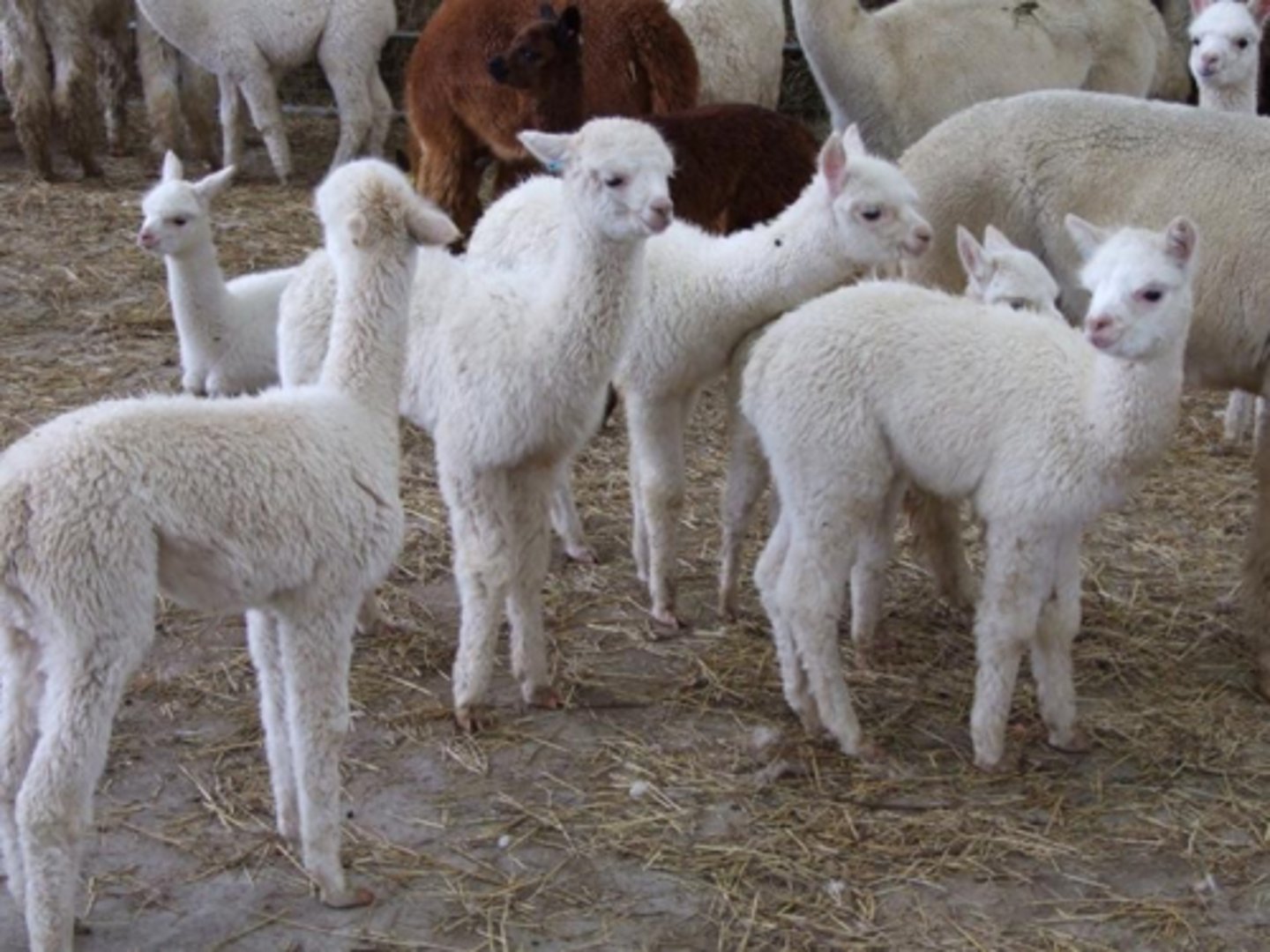
How should you hold a cria?
-Loop chest and bum to hold legs at the elbow/knee
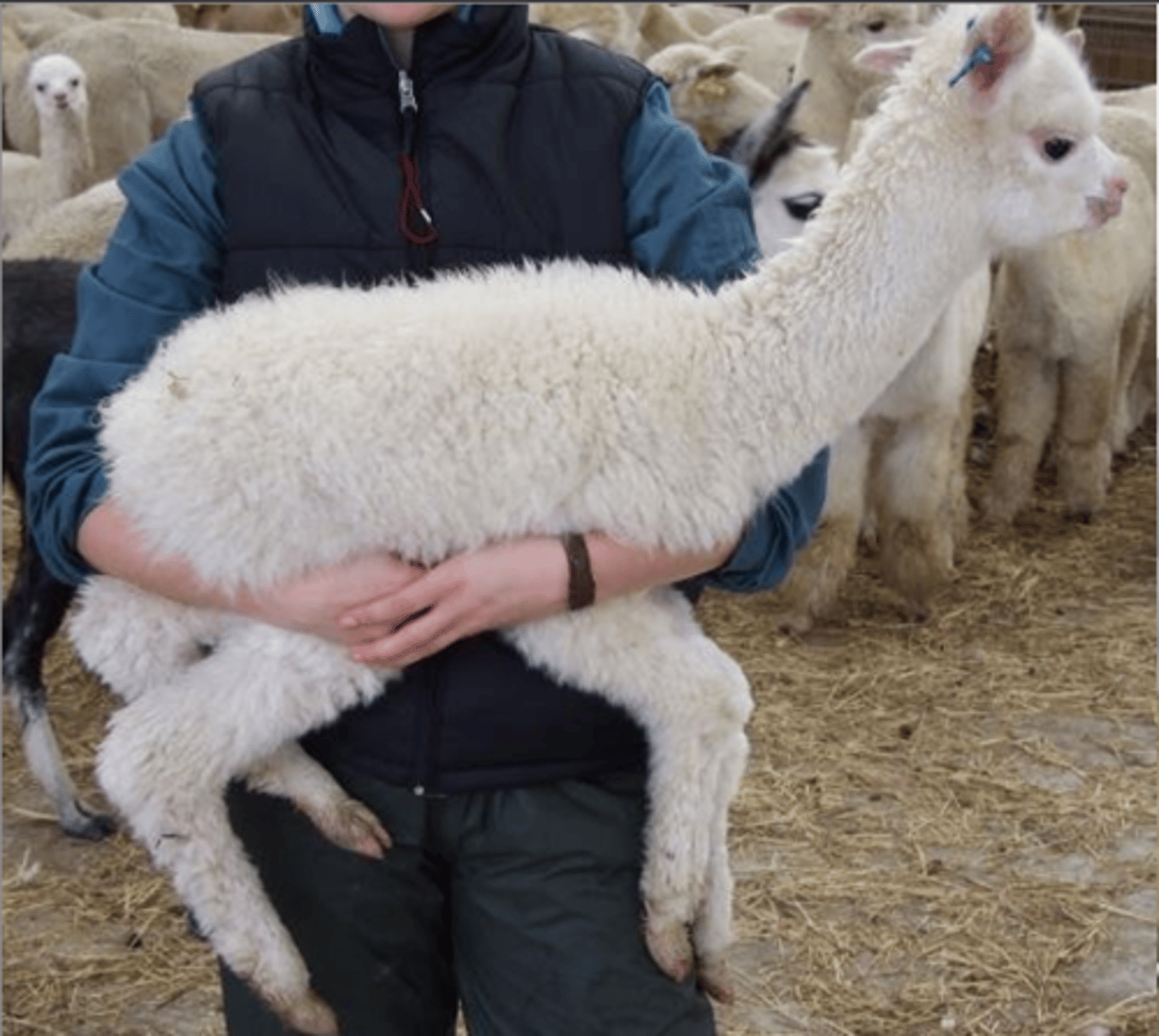
Describe the main anatomical differences of camelids from the core species
-Walk on P2 and P3 on soft digital pads with an ungual process on each digit (sometimes needs trimming)
-Have metatarsal gland on back legs
-No incisors on the upper arcade (dental pad); I = 3, C = 1 (fighting teeth), P = 2, M = 4; Have sharp and pointed molars for serration (don't smooth down)
-Have 3 stomachs (C1, 2, 3); C1 = (pseudo) rumen, C2 = Outpouch of C1, C3 = abomasum (increased SA by sacules for secretion and digestion)
-Double-helix spiral colon
-No gall bladder
-Produce faecal pellets
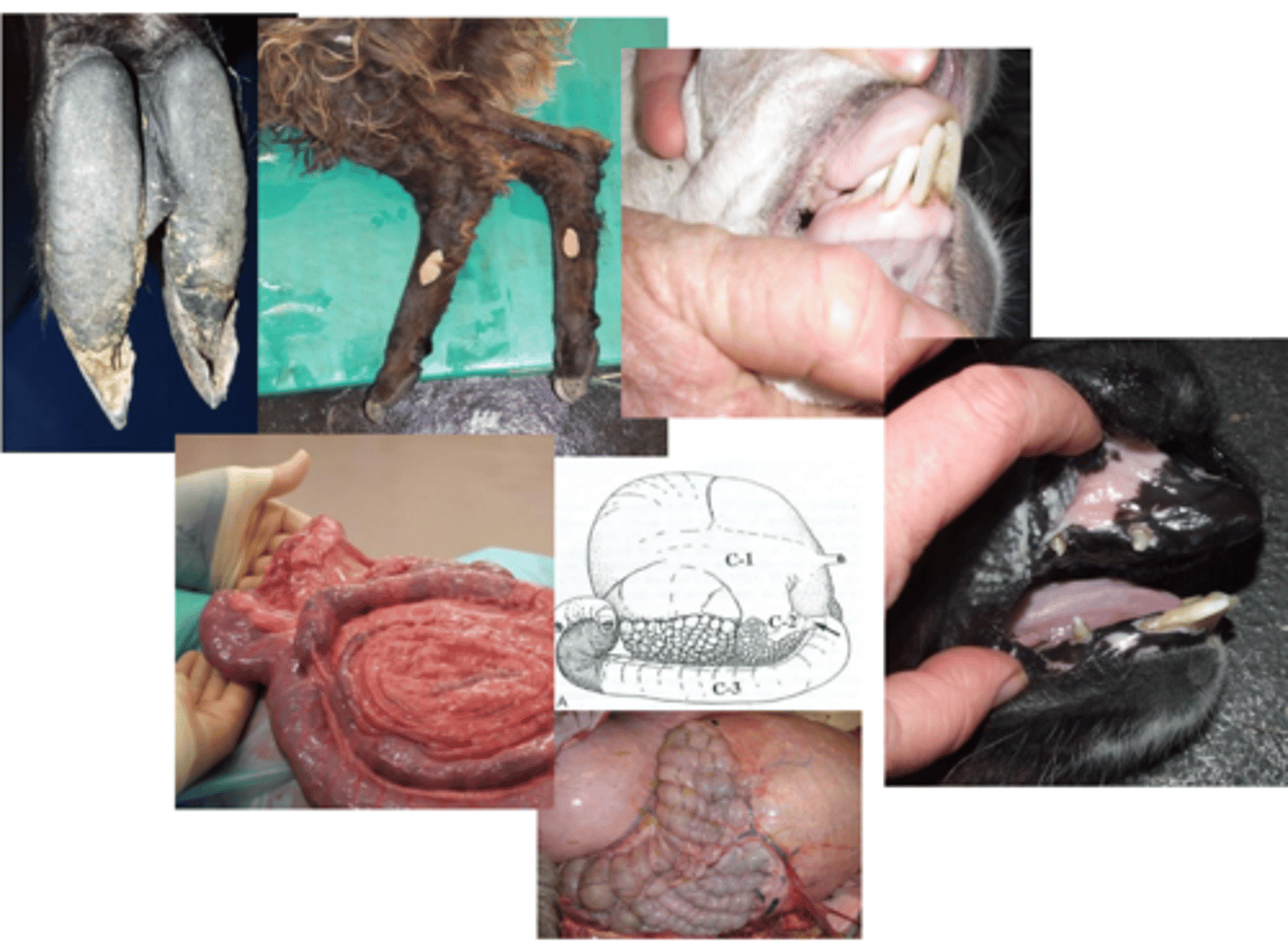
What adaptations to camelids have for dealing with poor diets?
-Increase C1 retention time
-Increase C1 volume
-Efficient urea recycling and urea degradation (if protein is short)
What is the appetite of an alpaca?
1.8% of BW.
What is the appetite of a llama?
2% of BW.
When might the appetite of a llama or alpaca increase?
-On higher activity levels
-At pregnancy and lactation
What is the gestation period of an alpaca and llama?
10-11 months.
What are the considerations when feeding fibre sources to camelids?
-Want short and long fibre
-Atleast 25% of DM
What are the considerations when feeding concentrate sources to camelids?
-Never feed more than 1/3 of DM in the diet
-Need to introduce new feed slowly
What is the main vitamin deficiency found in alpacas and llamas? What must you do to control this?
-Vitamin D
-Need to provide supplements (e.g. licks, paste, gel)
What is the most common health problem in llamas and alpacas in the UK?
Obesity.
Water requirements of camelids?

How can we avoid heat and cold stress in camleids?
-Use shelters (from wind or sun)
-Ensure appropriate water sources
